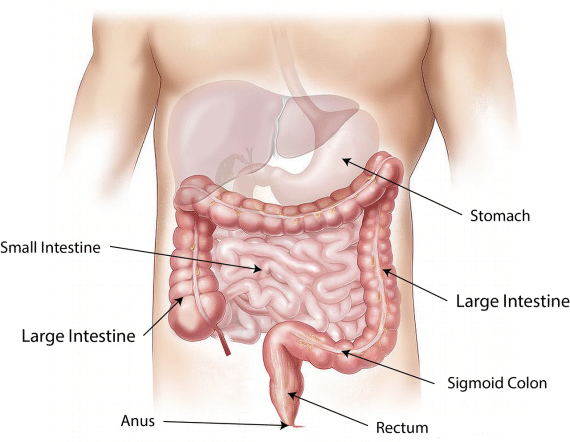What is SIBO?
SIBO stands for Small Intestinal Bacterial Overgrowth, which basically means that normal bacteria within our small intestine (the part of our GI tract where food goes right after leaving our stomach) is out of balance. These are normal and healthy bacteria found in our digestive tract, but due to different factors they have been thrown out of the normal balance – certain species of bacteria are found in higher amounts and others are found in much lower amounts than in healthy digestive tracts. This imbalance often leads to a number of unpleasant symptoms, most common are gas, bloating, constipation and/or diarrhea. It’s also fairly commonly associated with other symptoms, digestive and otherwise. Symptoms like heartburn, abdominal pain or discomfort, sensation of fullness and even less specific issues like brain fog or low energy after or between meals. Some diagnoses can be related and linked to SIBO such as fibromyalgia, chronic fatigue syndrome, Irritable Bowel Syndrome (IBS) and more. All of these symptoms are often a sign of imbalanced bacteria within the digestive tract.
How it happens
There are a number of ways our gut bacteria are thrown out of balance. Below are the most common causes of imbalance, though other factors may be involved as well.
Common Causes of SIBO
- Antibiotic use (often prescribed for an illness or infection)
- Certain medications: acid blockers and steroids
- Poor Diet (processed foods, high carbohydrates and sugars)
- Stress induced digestive changes
- Neurological/muscular concerns
- Diabetes
- Diverticulosis
Normal digestion
To better understand just what SIBO is and how it really happens (and hangs around), we need to understand a few basic phases of digestion.

- Phase 1: Digestion starts in the mouth with chewing food. The goal here is to chew large pieces of food into smaller pieces. This prepares for the next step.In SIBO this can be very important as the next steps are less able to handle under-chewed food, which can lead to aggravating or perpetuating an overgrowth.
- Phase 2: Food is swallowed and reaches the stomach, where acid begins to further breakdown foods.
- Phase 3: Small amounts of food are released into the small intestines where enzymes break apart food to basic components that are then absorbed by the intestines (vitamins, minerals, amino acids, etc). Fiber is left unabsorbed and becomes a carrier for any waste products.
- Phase 4: Food progresses through the small intestine and enter the large intestine where water is reabsorbed before fiber and waste exit the body.
What is off in SIBO
In SIBO there is often a problem at multiple steps along the way. A major issue is the lack of motility, which is the muscle contraction of the entire digestive tract. This is the squeezing and pushing action that helps the food we eat move along down the line. This can lead to food lingering for longer amounts of time in the stomach, small and large intestines. This creates major issues as the normal healthy bacteria in our gut are normally moved along and pushed down the line, this gives these bacteria the opportunity to hang out a little longer and eventually move back up to areas they don’t truly belong. This is a primary concern in addressing SIBO.
Another issue is the lack of proper acid and digestive enzymes. Things like emotional stress, advanced age and food sensitivities lead to a decreased production of stomach acid, or HCl. If stomach acid production is low it inhibits the ability of our natural digestive enzymes to function as each set of enzymes functions at very specific levels of pH. Some people may have issues creating the enzymes themselves, which also needs to be addressed.
Four Primary Problems of SIBO
- Intestinal motility (movement by muscle contractions)
- Low stomach acidity
- Low enzyme production
- Good bacteria in the wrong places
Testing – how to know
Unfortunately the testing associated with SIBO is not always 100% accurate, but it does give useful information. The most common testing involves a breath test which helps tell which type of bacteria is overgrown. Knowing this can guide which approaches and antimicrobial therapies to use.
How to address
There are multiple ways to address SIBO when you get into the details, though the only approaches that will provide lasting relief must address each of the above problem areas. If we simply address the bacterial overgrowth and ignore problems with motility, acidity and enzymes then a few months or a year down the road the problem generally returns. When we work with SIBO we’re trying to focus on the root cause and some of the strategies that we often consider are below.
- Antibiotics/Antimicrobials
- Nutrients to Support the Digestive Tract
- Support stomach acidity and digestive enzymes
- Stress Management and Support
- Motility Support
- Diet Correction
If you have been dealing with problems that might be related to SIBO, a naturopathic doctor can help in identifying the root cause of your digestive distress and abdominal discomfort. Contact our office at 916-351-9355 for more information and to book with our doctors
